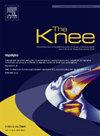Patient reported outcome measures, healthcare utilization, and survivorship after unicompartmental knee arthroplasty may not be impacted by obesity
IF 2
4区 医学
Q3 ORTHOPEDICS
引用次数: 0
Abstract
Aims
Obesity has long been considered a relative contraindication to medial unicompartmental knee arthroplasty (mUKA). However, controversy remains. This study aimed to assess the association of BMI with (i) 1-year patient reported outcome measures (PROMs), (ii) healthcare utilization, and (iii) survivorship and mortality in patients undergoing mUKA.
Methods
886 mUKA patients from 2016 to 2022 at a single hospital system were identified. PROMs included Knee disability and Osteoarthritis Outcome Score (KOOS) for Pain, Joint Replacement (JR), and Physical function Shortform (PS), Achievement of the Minimal Clinically Important Difference (MCID), and Patient Acceptable Symptom State (PASS). Healthcare utilization was assessed by length of stay (LOS), discharge disposition (DD), readmission, and emergency department (ED) visits. Survivorship was assessed using 1- and 2-year reoperations and 1-year mortality. Multivariate regression was used to predict the effect of BMI on outcomes of interest.
Results
In multivariate analyses, BMI did not predict MCID-JR, PASS-PS, PASS-Pain, PASS-JR, and 90-day ED visits. There were no differences in achievement of MCID-Pain (p = 0.4), LOS (p = 0.62), DD (p = 1), 90-day readmission (p = 0.78), 1-year reoperation (p = 0.75), and 2-year reoparation (p = 1), between cases with BMI above and below 35. Class I obesity was associated with failure to achieve MCID for KOOS-PS (OR = 1.94, 95 % CI [1.02–3.67], p = 0.04).
Conclusion
Overall, BMI did not impact healthcare utilization, PROMs, or short term survivorship following mUKA. Therefore, using BMI as a contraindication for mUKA may be unwarranted. With the continued rise in mUKA numbers, enhanced understanding of the influence of morbid obesity on healthcare utilization, survivorship, and PROMs is needed.
患者报告的结果测量、医疗保健利用和单室膝关节置换术后的生存率可能不受肥胖的影响
目的肥胖一直被认为是内侧单室膝关节置换术(mUKA)的相对禁忌症。然而,争议仍然存在。本研究旨在评估BMI与(i) 1年患者报告的结果测量(PROMs), (ii)医疗保健利用,以及(iii) mUKA患者的生存率和死亡率之间的关系。方法选取2016 - 2022年在某医院系统就诊的886例mUKA患者。PROMs包括膝关节残疾和骨关节炎疼痛结局评分(oos)、关节置换术(JR)和身体功能简表(PS)、最小临床重要差异(MCID)实现和患者可接受症状状态(PASS)。通过住院时间(LOS)、出院处置(DD)、再入院和急诊室(ED)就诊来评估医疗保健利用情况。生存率评估采用1年和2年再手术和1年死亡率。采用多变量回归预测BMI对研究结果的影响。结果在多变量分析中,BMI不能预测MCID-JR、PASS-PS、PASS-Pain、PASS-JR和90天ED就诊情况。BMI≥35的患者在MCID-Pain (p = 0.4)、LOS (p = 0.62)、DD (p = 1)、90天再入院(p = 0.78)、1年再手术(p = 0.75)、2年再手术(p = 1)方面均无差异。I级肥胖与KOOS-PS患者未能达到MCID相关(OR = 1.94, 95% CI [1.02-3.67], p = 0.04)。总体而言,BMI不影响mUKA后的医疗保健利用、PROMs或短期生存。因此,使用BMI作为mUKA的禁忌症可能是没有根据的。随着mUKA数量的持续增加,需要进一步了解病态肥胖对医疗保健利用、生存和prom的影响。
本文章由计算机程序翻译,如有差异,请以英文原文为准。
求助全文
约1分钟内获得全文
求助全文
来源期刊

Knee
医学-外科
CiteScore
3.80
自引率
5.30%
发文量
171
审稿时长
6 months
期刊介绍:
The Knee is an international journal publishing studies on the clinical treatment and fundamental biomechanical characteristics of this joint. The aim of the journal is to provide a vehicle relevant to surgeons, biomedical engineers, imaging specialists, materials scientists, rehabilitation personnel and all those with an interest in the knee.
The topics covered include, but are not limited to:
• Anatomy, physiology, morphology and biochemistry;
• Biomechanical studies;
• Advances in the development of prosthetic, orthotic and augmentation devices;
• Imaging and diagnostic techniques;
• Pathology;
• Trauma;
• Surgery;
• Rehabilitation.
 求助内容:
求助内容: 应助结果提醒方式:
应助结果提醒方式:


